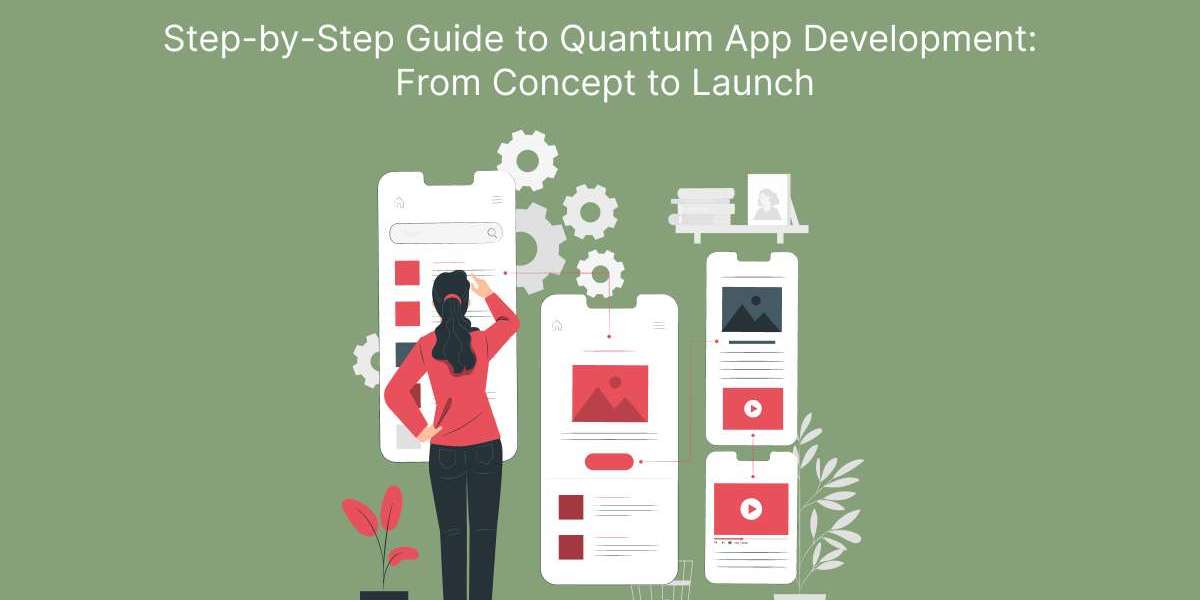Quantum computing represents a significant leap from classical computing, offering enormous processing power by harnessing quantum mechanics. Quantum apps aim to leverage this power, enabling solutions for complex problems in cryptography, optimization, artificial intelligence, and more. This guide will walk you through each step of quantum app development, from concept creation to a successful launch.
Understanding Quantum Computing Basics
Before diving into development, it's crucial to understand how quantum computing differs from classical computing.
What is Quantum Computing?
Quantum computing utilizes quantum bits, or qubits, which can represent both 0 and 1 simultaneously through superposition. This feature, along with quantum entanglement and interference, enables quantum computers to perform complex calculations at speeds unreachable by classical computers.
Key Quantum Concepts for Developers
- Superposition: The ability of a qubit to be in multiple states at once.
- Entanglement: A state where qubits become interconnected, and the state of one can depend on the other.
- Quantum Gates: Operations that manipulate qubits, equivalent to logical gates in classical computing.
Step 1: Define Your Quantum App Idea
The initial step in developing a quantum app is identifying its purpose and potential users.
Identify a Use Case
Determine the problem your quantum app will solve. Quantum computing is particularly suited for:
- Optimization Problems: Examples include supply chain management and financial modeling.
- Cryptography: Developing encryption algorithms or breaking existing cryptographic protocols.
- Machine Learning: Accelerating data processing in AI and big data applications.
Research Potential Market Needs
Conduct research to validate the demand for your app. Engage with potential users and assess competitors in the quantum computing field.
Step 2: Research and Select Quantum Platforms
Choosing the right quantum computing platform is crucial for effective development.
Popular Quantum Platforms
- IBM Quantum: Offers IBM Q Experience and Qiskit, an open-source quantum computing SDK.
- Google Quantum AI: Known for the Cirq platform, it is ideal for advanced quantum computations.
- Microsoft Azure Quantum: A cloud-based platform with multiple quantum providers.
- Rigetti Computing: Provides access to quantum computing through Forest SDK and Quil programming language.
Select the Best Platform for Your App
Consider platform capabilities, compatibility, and development tools. Each platform has unique strengths, so choose one that aligns with your app’s requirements.
Step 3: Design the Quantum Algorithms
The heart of any quantum app lies in its quantum algorithms, which are quite different from classical algorithms.
Develop Quantum Algorithms Suited to Your App’s Needs
Quantum algorithms differ from classical algorithms in structure and function:
- Quantum Fourier Transform (QFT): Useful for applications involving signal processing or cryptographic analysis.
- Grover’s Algorithm: Ideal for database search applications.
- Shor’s Algorithm: Used primarily in cryptography to factor in integers.
Use Quantum SDKs and Libraries
Most quantum platforms provide SDKs to simplify the development process. For example, Qiskit (IBM), Cirq (Google), and Forest (Rigetti) include built-in libraries to assist with quantum algorithm development.
Step 4: Develop the Quantum App
Now that you’ve designed the core algorithms, it’s time to develop your quantum app.
Implement the Quantum Code
Use quantum programming languages like Qiskit for Python, Cirq for Google, or Q# for Microsoft to build the application.
Develop the Classical Components
Since quantum systems need classical components to handle I/O and preprocessing, create a hybrid setup where the classical frontend interacts with quantum processes. Use standard tools for building the classical parts, like Python, JavaScript, or a frontend framework.
Step 5: Test and Debug Your Quantum App
Testing a quantum app requires specialized tools and approaches due to the probabilistic nature of quantum computing.
Use Quantum Simulators
Quantum simulators like IBM’s QASM or Google’s Cirq simulator are vital for debugging before running on actual quantum hardware.
Optimize for Error Correction
Quantum computers are error-prone due to decoherence and other quantum phenomena. Employ error-correcting algorithms and test your app’s stability on simulators.
Conduct User Acceptance Testing (UAT)
Gather feedback from users to ensure the app meets their expectations and functions as intended.
Step 6: Optimize for Performance
Quantum computing resources are limited and expensive, so performance optimization is essential.
Optimize Quantum Circuit Design
Quantum gates consume computational resources, so aim to reduce the number of gates used. Simplify your quantum circuits by analyzing the complexity of your algorithms and minimizing unnecessary operations.
Reduce Qubit Usage
Qubits are expensive to maintain and operate. Simplifying your algorithms to use fewer qubits can significantly reduce costs and increase processing efficiency.
Step 7: Prepare for Launch
After testing and optimizing, it’s time to prepare for launch.
Set Up Infrastructure for Quantum Cloud Computing
Quantum apps often require cloud resources for scalability. Configure the necessary cloud resources on your chosen platform, whether IBM Quantum, Azure Quantum, or another service.
Establish a Deployment Strategy
Create a deployment plan that covers the following:
- Scalability: Ensure the app can handle multiple users or large datasets.
- Security: Implement robust security protocols for data protection and quantum cryptographic functions.
Market and Launch Your Quantum App
Promote your quantum app through targeted marketing strategies, including educational content that explains quantum computing to your audience. Engage with tech communities and reach out to quantum computing forums to generate interest.
Conclusion
Developing a quantum app is an ambitious and rewarding endeavor. By following a structured approach—from defining your idea to selecting the right platform, designing quantum algorithms, and optimizing performance—you can bring a functional quantum app to market. Quantum computing holds the potential to revolutionize fields from cryptography to AI, and your app could be at the forefront of this technological breakthrough.
Unlock the secrets of quantum app development with our step-by-step guide! Learn how an on-demand app development company can bring your concept to life and launch your app successfully. Embrace the unique challenges of quantum development, and your app could open doors to innovations beyond classical computing capabilities.








